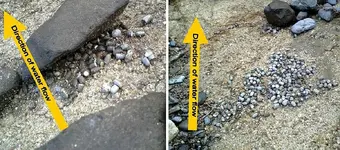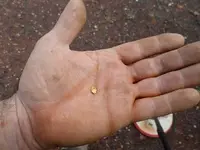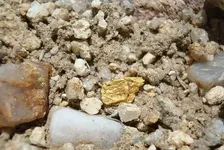shiro-san
Greenie
Hello everyone
Newbie question:
I'm watching this docu and in this scene https://youtu.be/YFF8ci_Fv9c?t=13m24s they're showing how a guy in Australia picks up a gold nugget from the surface of the ground (not bedrock either).
But how is that possible? I thought the gold sinks. Just a day before this scene there was rain, so it didn't sink even in the mud for some reason. Is that possible in places other than Australia?
Newbie question:
I'm watching this docu and in this scene https://youtu.be/YFF8ci_Fv9c?t=13m24s they're showing how a guy in Australia picks up a gold nugget from the surface of the ground (not bedrock either).
But how is that possible? I thought the gold sinks. Just a day before this scene there was rain, so it didn't sink even in the mud for some reason. Is that possible in places other than Australia?
Upvote
0





 , the thing is you have to understand the geology and the climate where they are being picked up. The geology is very old and what were once mountians are now hills or just flats. Most of the lighter stuff has been eroded away but not by massive amounts of water but mostly wind action, solar heating and movement by gravity. This creates conditions in which gold pretty much just sits where it fell out and any movement has been over a very long, slow, period of time. This also leads to concentrated "patches" of gold where the likelihood of finding gold not just on the top but all the way thru the soil to bedrock are very good. In some area's where there has been sufficient water to move material in the distant past concentrations of gold will occur as well. Many end up locked away in calichi (a cement like material) and over time those deposites erode and leave patches much like elluvial deposits.
, the thing is you have to understand the geology and the climate where they are being picked up. The geology is very old and what were once mountians are now hills or just flats. Most of the lighter stuff has been eroded away but not by massive amounts of water but mostly wind action, solar heating and movement by gravity. This creates conditions in which gold pretty much just sits where it fell out and any movement has been over a very long, slow, period of time. This also leads to concentrated "patches" of gold where the likelihood of finding gold not just on the top but all the way thru the soil to bedrock are very good. In some area's where there has been sufficient water to move material in the distant past concentrations of gold will occur as well. Many end up locked away in calichi (a cement like material) and over time those deposites erode and leave patches much like elluvial deposits.



